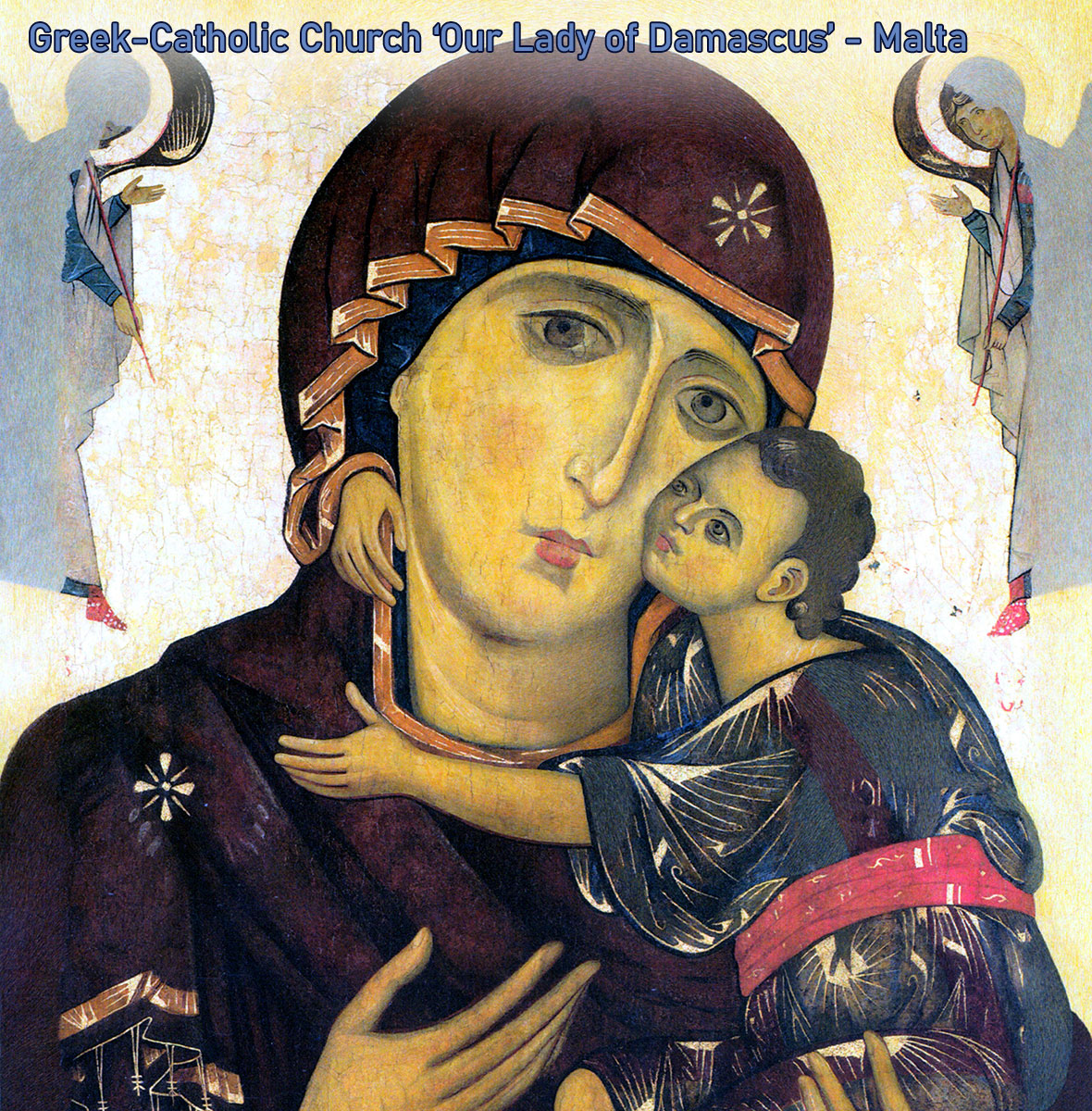 The history of the icon of Our Lady of Damascus is intimately bound with that of the Sovereign Military Hospitaller Order of St. John of Jerusalem, Rhodes and Malta. It was brought by the Order at the request of Greeks who accompanied the Knights from Rhodes to Malta when, overcome by the Turks, the Order had to leave Rhodes in 1523.
The history of the icon of Our Lady of Damascus is intimately bound with that of the Sovereign Military Hospitaller Order of St. John of Jerusalem, Rhodes and Malta. It was brought by the Order at the request of Greeks who accompanied the Knights from Rhodes to Malta when, overcome by the Turks, the Order had to leave Rhodes in 1523.
The icon became known as Our Lady of Damascus because some of the knights when they first saw it, claimed to have seen it previously in Damascus, and this explains the name it bears.
Between 1523 and 1530 the icon traveled with the Knights to Candia, Messina, Civitavecchia, Rome and Viterbo. It was brought to Malta in 1530 with all the other treasures of the Order. Grand Master Villiers de l’Isle Adam placed it in the church of St. Catherine in Borgo del Castello, present day Vittoriosa. It remained there till 1587 when it was solemnly transported, in the most sumptuous galley of the Order, across the Grand Harbor to the new city of Valletta, where it was placed, for the veneration of the faithful, in the newly-built Greek church dedicated to Our Lady of Damascus.
La Valette: a devotee
Grand Master Jean de la Valette was a fervent devotee of this Madonna. When on September 7th 1565 the exhausted Turkish army fled to their ships, the heroic Grand Master, followed by the knights and a rejoicing crowd of Maltese, expressed their thanksgiving before this icon. La Valette left his cap and sword on the steps of the altar as a votive offering. This event was commemorated by Grand Master Emanuel de Rohan by means of a marble plaque when the chapel was restored in 1779.
Other Grand Masters showed their devotion to Our Lady of Damascus. They included: Pietro del Monte who donated the site for the building of the new church; Nicholas Cotoner, who wanted a larger and more elaborate church to house the precious icon of the Virgin, and Gregorio Caraffa, who provided all the necessary elements required for liturgical celebration.
Restored in Rome
Between 1963 and 1966 the icon was meticulously cleaned and restored in the Central Institute of Art Restoration, in Rome, at the expense of the Italian government. The patient work of the restorers, who removed layers of grime and successive over-paintings accumulated during the centuries, brought the picture back to its original beauty.
The icon was given a prominent place in the Thirteenth Council of Europe Exhibition held in Malta from April 2nd to July 1st 1970.
The icon is of the type known as Eleousa, ‘the Merciful’, similar, in some respects, to the well-known Madonna of Vladimir (XII century, School of Constantinople), permanently exhibited in the Tretyakov Gallery in Moscow. An icon of the Eleousa type is recognized by the very close and tender union of the Theotokos and her Divine Infant.
The Our Lady of Damascus icon measures 147.5 x 102.5 cm. while that of the Virgin of Vladimir is only 78.1 x 54.6 cm. David Talbot Rice, Professor of Fine Arts at the University of Edinburgh and author of Byzantine Art, considers the icon of Our Lady of Damascus “a thing of great beauty and historical importance in addition to being an expression of faith”. He is inclined to believe that it is even older than the Virgin of Vladimir, i.e. earlier than the 12th century.
The Madonna wears the mantle of a Byzantine Empress. The three stars, one on each shoulder and one on the forehead, symbolize her virginity before, during and after the birth of the Child Jesus, and of her consecration as unique co-operator in the mystery of the Divine Incarnation. The Baby’s robe is tied by a red sash, a color sometimes used to signify divinity.
Immobility
The face dominates the whole composition. The eyes, very large and with a fixed expression, seem to gaze beyond and into the eyes of the person praying. The thin nose, which is delicately curved, and the high broad forehead stress the predominance of the contemplative life. The dynamism of the gaze is eloquently emphasized by the composed immobility of the whole body. All anxiety and gesticulation fade before interior peace.
The icon of the Panaghia Damaskiní illustrates the gradual tendency of Byzantine art at the time of the Comnenes, in which the personal, intimate relationship between Mother and Child is emphasized.
It can be said of icons in general that they witness to the heavenly glory which is manifested in the figures represented on the gold background. The heavenly archetypes, which they represent, charge them with something of their own power. These icons are, for the faithful, support and means of approaching the divine splendor The icon, then, is not only an aesthetic object but a “channel of divine grace”.
The icon of Our Lady of Damascus may be seen at the Greek Catholic Church in 132 A Archbishop Street Valletta, Malta.
Reproductions with the image of Our Lady of Damascus icon are available for purchase.



You must be logged in to post a comment.